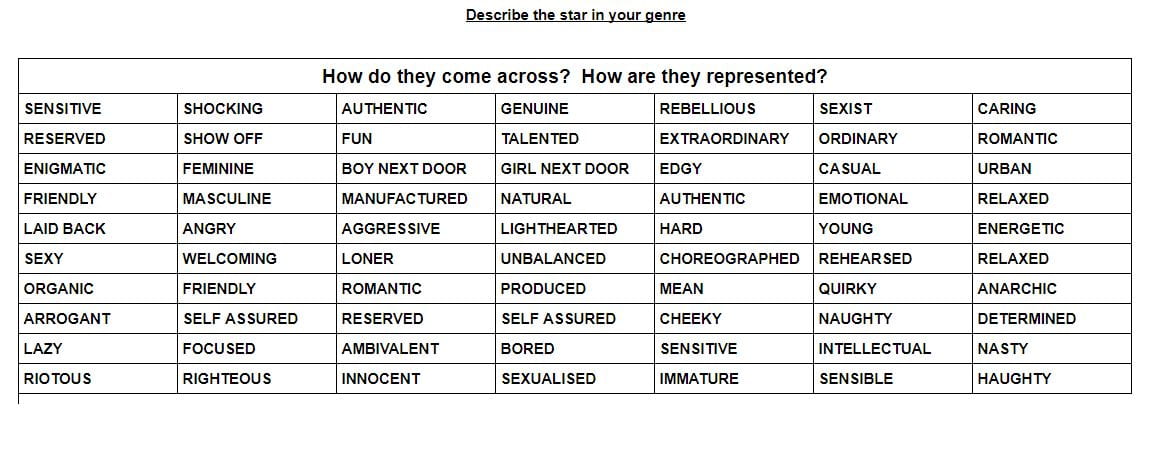KEY TERMS: mission statement, brand, genre, USP (unique selling point), uses and gratification theory (entertainment, information, personal identity, social interaction).
Task 1 – Which genre?
It’s probably best to choose a genre of music you understand, like and can get excited about.
That said, some genres of music have very specific conventions and might be able to provide you with much more scope for design decisions and copy style. If you are undecided perhaps choose a very obvious genre, such as punk or metal
Research various genres – you will be amazed how many sub-genres and sub-cultures there are. These are just a few.

Have a look at the work on the walls of the classroom to help in your decision.
Task 2 – Develop possible names for your magazine.
Use a generator app or a thesaurus for simple, catchy and genre specific names for your magazine. For example:
- Bonus, Fault, Exchange, Storm, Louder, Open Mic, Score, Epoch, Placebo, Audio, Stream, Hustle, Phonic, Whisper, N&U (new and unsigned), Orbit, Swipe, Double Tap, Like, Status, Plectrum.
Task 3 – Branding Ideas and Mission Statement
Create a word-cloud that includes all the words that relate to what might be your mission statement for your magazine – its PURPOSE AND CONTENTS. For example will your magazine feature: new talent, unsigned artists, fashion, concerts, festivals, be edgy, anarchic, energetic? Address all 4 of the Uses and Gratification that Blumler and Katz talk about to ensure maximising your sales to ensure that your contents will appeal to their use of the text. Include the name of the magazine in a different colour. Include too, all the necessary generic contents i.e. contents page, interviews, competitions etc.
Here is an example word-cloud and mission statement from last year.
“Amigos pulls people together to love and appreciate their heritage through the power of music, we want to encourage the world to embrace Latino culture and the amazing music that follows it. We want to change the way the world thinks about Latino culture and acknowledge that it is here to stay. We will provide you with the latest information about your favorite artists and tours close to and far away from home”
‘We are a brand, and most of all a community, that believe in the power of diversity within the music industry. Millennial’s ethics are to promote our passions; colour, rhythm, fashion and culture. The R&B community to us, is all about being able to express your creative individuality, while being part of something wider.’
‘Express’ is one of the top ten magazines for those that love Pop music. We cover your favourite Pop artists as well as upcoming stars, giving you exclusive interviews, top stories from your most-loved artists, new album releases and new tour dates from artists topping our charts daily. Express magazine inspires young people to fall back in love with Pop as the new-age of Pop drives the magazine forwards, allowing our readers to express themselves and become the best individuals they can be.
Your post will include: (all key terms as listed above).
- Introduction to the genre and name for the magazine.
- Word Cloud
- Mission Statement
Reflection on the research process and focus forward.


